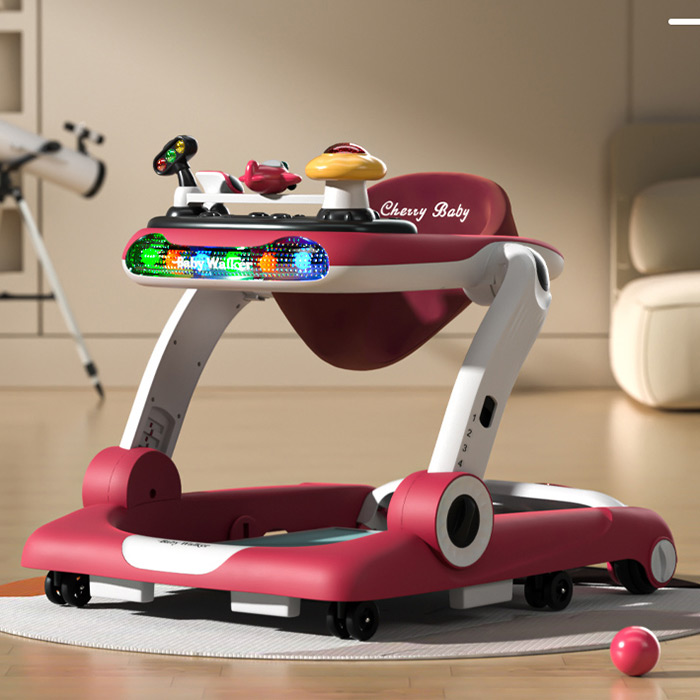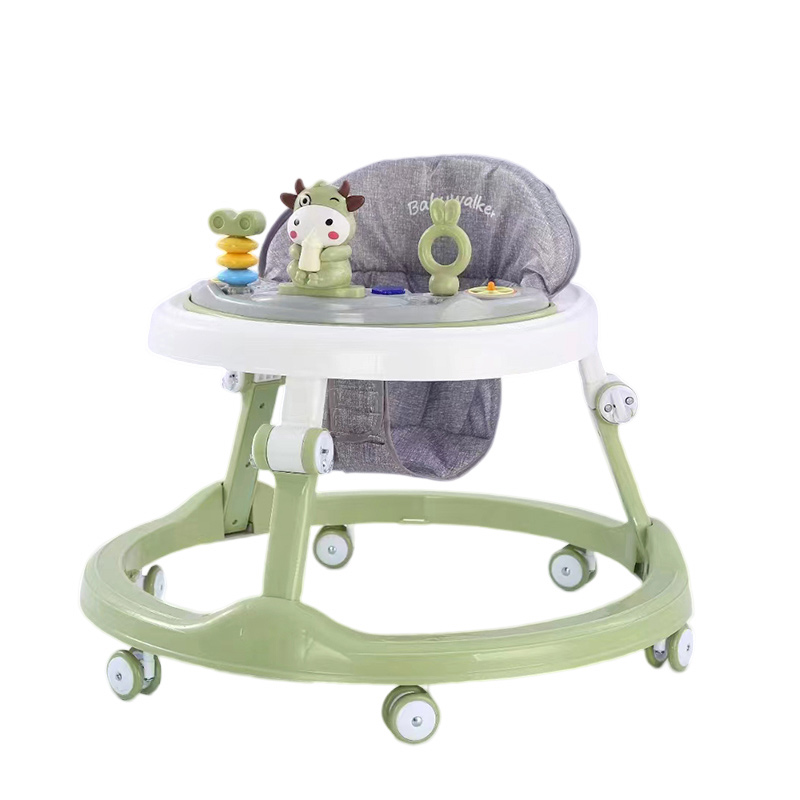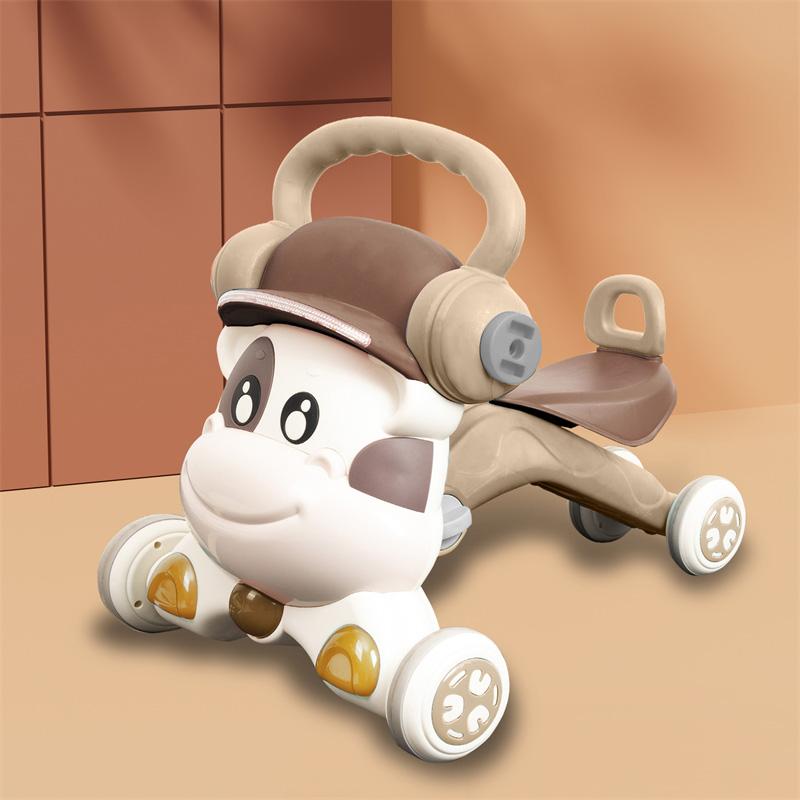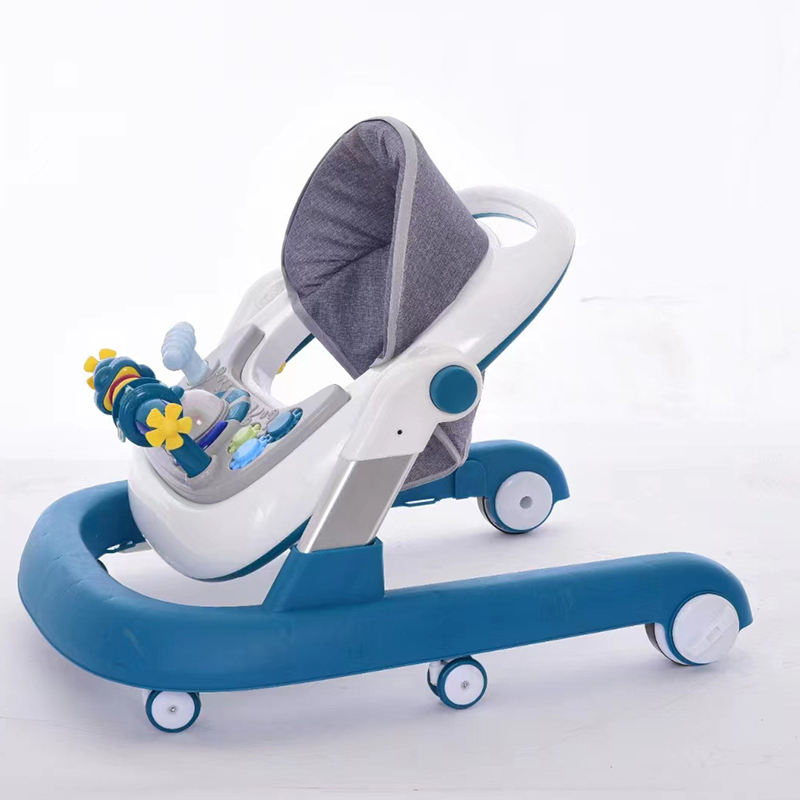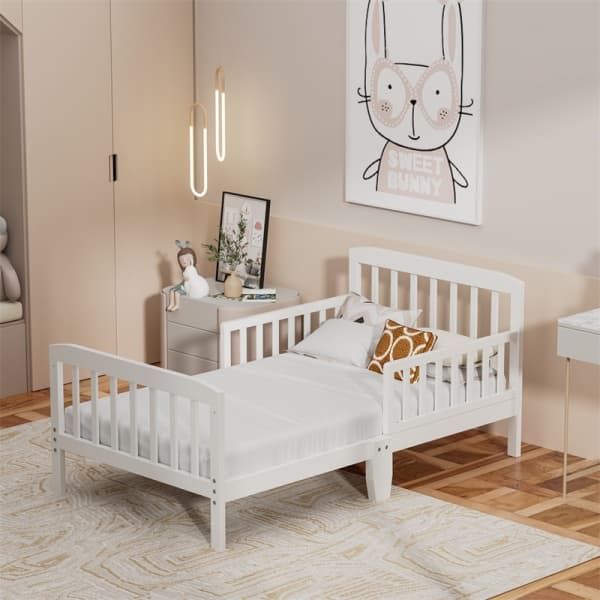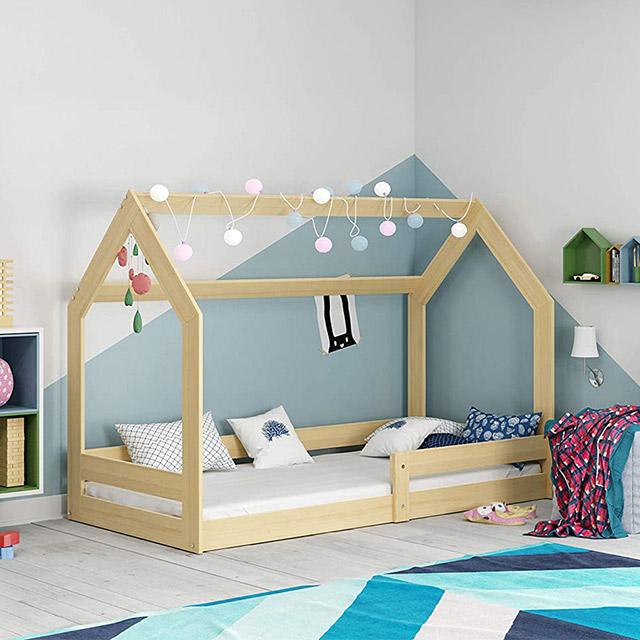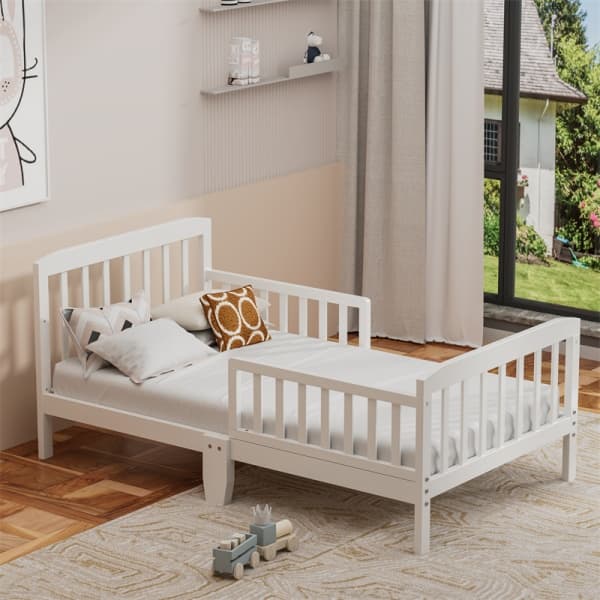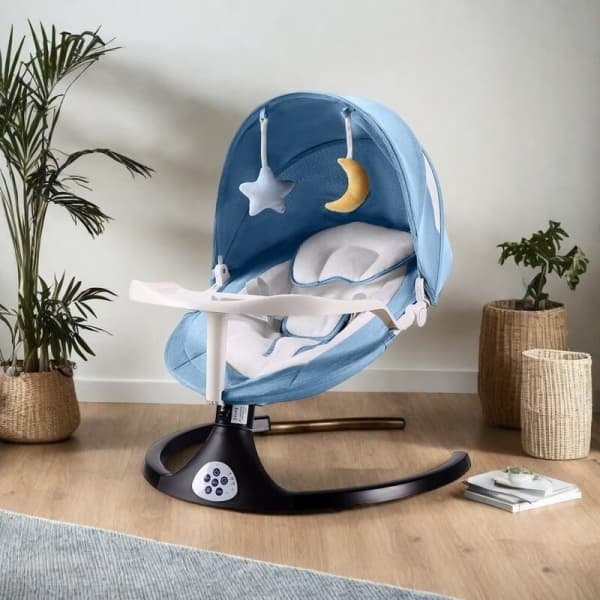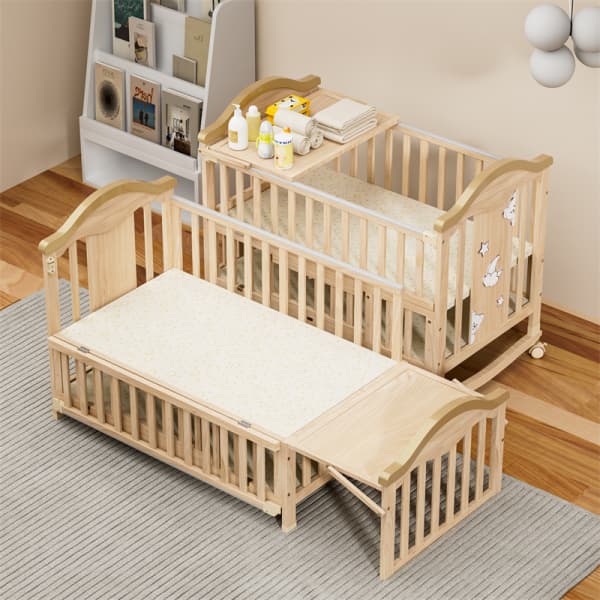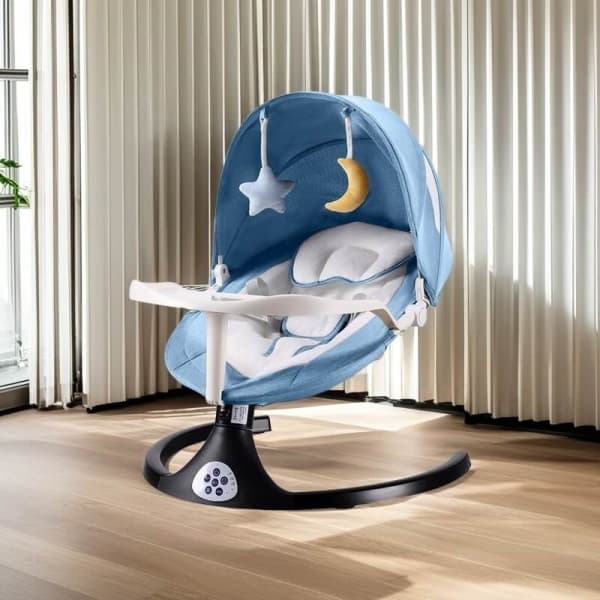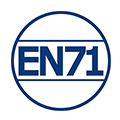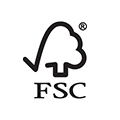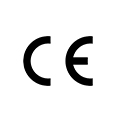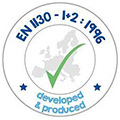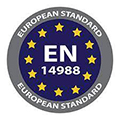Le marché des trotteurs pour bébés a considérablement évolué ces dernières années. Les consommateurs sont toujours les mêmes, mais des détails tels que la conception des trotteurs pour bébés et les réglementations en matière de sécurité des produits pour enfants sont désormais très différents.
Donc, si vous êtes un grossiste ou distributeur de marchettes pour bébés ou si vous envisagez de pénétrer le marché, installez-vous. Lisez la suite pour découvrir les évolutions du marché, les variétés de trotteurs pour bébés, les conseils d'approvisionnement et toutes les informations dont vous avez besoin pour réussir. Nous vous expliquerons également comment importer des trotteurs pour bébés de Chine ou d'autres pays.
Comprendre le marché des trotteurs pour bébés
Différents facteurs influencent les perspectives et la rentabilité du marché des trotteurs pour bébés. Explorons brièvement chacun de ces facteurs essentiels, d'accord ?
1. Taille du marché

Projections de recherche montrent que le marché mondial des marchettes pour bébés vaut environ $1,2 milliard à partir de 2024. Amérique du Nord est actuellement le plus grand marché en termes de nombre de consommateurs qui investissent dans des trotteurs pour bébés et de montant d'argent dépensé pour ces produits. Le reste de la part de marché est réparti entre les régions suivantes (par ordre) :
- Europe
- Asie
- Amérique du Sud
- Le Moyen-Orient et l'Afrique
2. Projections de croissance
Les experts prévoient que l’industrie des marchettes pour bébés connaîtra un taux de croissance annuel composé (TCAC) d'environ 5 à 6% jusqu'en 2030En chiffres, cela implique que l'industrie des marchettes pour bébés, qui vaut aujourd'hui 1,2 milliard de TP4T en 2024, vaudra environ $1,5 milliard à $1,6 milliard en 2030.
En outre, les données sur les consommateurs du marché Asie-Pacifique prouvent qu'il s'agit du marché des trotteurs pour bébés qui connaît la croissance la plus rapide. Ce taux de croissance élevé du marché peut être principalement attribué à :
- Une population plus importante de mères qui travaillent:Les mères qui travaillent fournissent aux familles des revenus plus importants qui leur permettent d'avoir accès à de meilleures installations de garde d'enfants. Leur mode de vie actif nécessite également des aides parentales sûres et pratiques, comme des trotteurs pour bébé.
- Urbanisation: L’accès à l’information et la sensibilisation à de meilleures approches de style de vie encouragent les familles à investir dans des marchettes pour bébés et des produits similaires pour faciliter la garde des enfants.
Ce sont des indicateurs positifs car lorsqu’un marché de produits connaît un taux de croissance à la hausse, les entreprises de ce créneau ont plus de chances de prospérer.
3. Segmentation des produits
Les études de recherche différencient les trotteurs pour bébés en fonction de leurs caractéristiques. Les types de trotteurs pour bébés les plus connus sont les suivants :
Marchettes traditionnelles pour bébés
La plupart des marchettes pour bébé traditionnelles sont conçues de manière à ce que les tout-petits puissent s'asseoir ou se tenir debout dans la marchette et l'utiliser comme support pendant qu'ils apprennent à marcher.
Marchettes multifonctions pour bébé
Les trotteurs multifonctions aident les tout-petits à développer bien plus que leurs capacités motrices. Ils peuvent être équipés de jouets interactifs qui développent la coordination ou d'un écran pour le divertissement. La plupart d'entre eux se transforment également en d'autres modes, comme une bascule ou un chariot à roulettes.
Marchettes intelligentes pour bébé
Les trotteurs intelligents pour bébés intègrent des fonctions technologiques. Par exemple, le trotteur peut s'auto-programmer pour jouer de la musique ou s'allumer lorsque l'enfant marche pour l'encourager.
Poussoirs
Déambulateurs sont légers mais stables. Les bébés peuvent les pousser pour s'amuser tout en s'appuyant dessus pour se soutenir. Cela les encourage à se tenir debout et, par conséquent, à marcher.
Dernières tendances en matière de marchettes pour bébés
Les tendances du marché des trotteurs pour bébés sont souvent déterminées par l'innovation des fabricants ou par les préférences des consommateurs. Certaines des principales tendances qui dominent actuellement le marché sont les suivantes :
1. Priorités en matière de sécurité
Il est évident que tous les parents souhaitent des produits sûrs pour leurs enfants. Cependant, les préoccupations en matière de sécurité concernant les trotteurs pour bébés sont désormais plus nuancées et détaillées qu'auparavant. Par exemple, les parents et les personnes qui s'occupent des enfants accordent désormais la priorité à :
- Marchettes pour bébé fabriquées à partir de matériaux sûrs et écologiques tels que du bois qui ne s'écaille pas ou du plastique sans danger pour les morsures.
- Marchettes stables pour bébé avec roues dotées de traction pour éviter de glisser.
- Marchettes pour bébé avec bords arrondis et doux pour éviter les blessures.
2. Commodité
Les parents d'aujourd'hui ont un style de vie plus actif et aventureux que jamais. Cela a conduit à une augmentation de la demande de trotteurs pour bébés dotés de fonctionnalités pratiques telles que :
- Pliabilité – pour un rangement et une manipulation faciles lors des voyages ou des sorties en extérieur.
- Convertibilité – la possibilité de transformer un déambulateur en fauteuil à bascule ou en poussette d’extérieur pour tout-petits est avantageuse car les parents n’ont pas besoin de les accompagner ou d’investir dans plusieurs appareils.
3. Dispositions relatives au développement du bébé
Les trotteurs pour bébés étaient initialement destinés à aider les bébés à développer leurs capacités motrices. Cependant, de nombreux fabricants de trotteurs pour bébés ont créé des modèles de trotteurs pour bébés avec des centres/consoles de jeu et d'apprentissage interactifs.
Les aires de jeux interactives sont idéales pour faciliter le développement des capacités de coordination des enfants ainsi que de leurs capacités intellectuelles. De plus en plus de parents et de personnes s'occupant d'enfants privilégient donc les trotteurs pour bébés dotés de telles caractéristiques en raison des avantages qu'ils peuvent offrir en termes de développement.
4. Style
Les parents modernes sont de plus en plus nombreux à adopter des produits de soins pour bébé élégants. Cela comprend des trotteurs pour bébé dotés de caractéristiques de conception élégantes telles que de belles couleurs, des finitions luxueuses et une manipulation confortable.
Comprendre les normes de sécurité des marchettes pour bébés dans différents pays
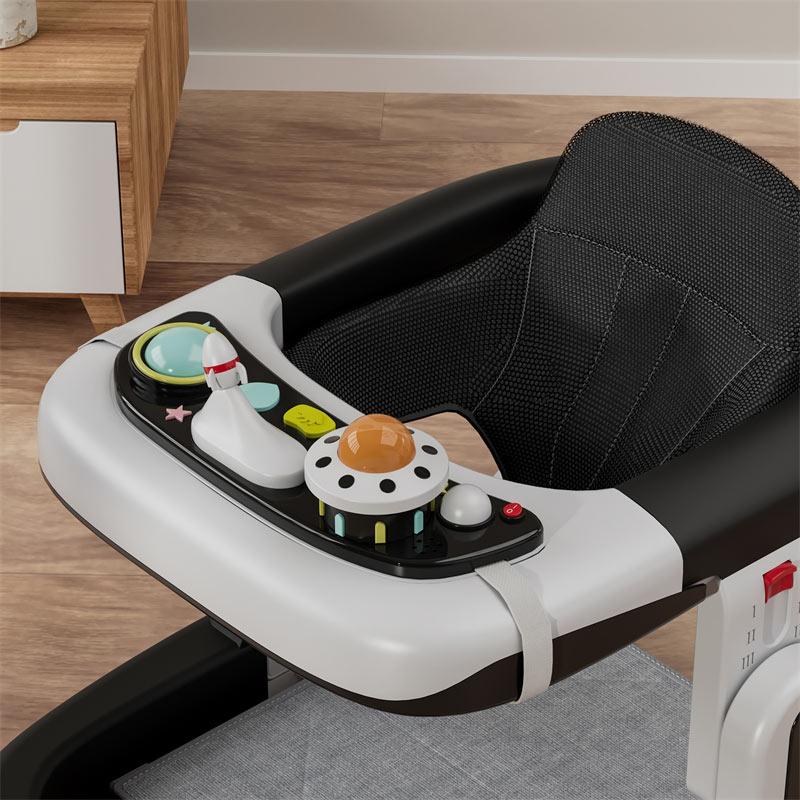
Les normes de sécurité fixées pour les trotteurs pour bébés sur votre marché détermineront les types et la qualité des trotteurs pour bébés que vous pouvez fournir. Elles constituent donc un facteur essentiel à prendre en compte lors de l'élaboration de votre stratégie commerciale. Voici quelques points saillants des normes de sécurité des trotteurs pour bébés de différents pays pour vous aider à démarrer.
Canada
Les autorités sanitaires canadiennes ont commencé à remarquer une augmentation des accidents liés aux marchettes pour bébés au début des années 2000. Elles ont alors lancé des études de recherche sur l’utilisation et la sécurité des marchettes pour bébés.
Plus tard, en 2004, le gouvernement canadien interdit l'utilisation, la vente, la revente, l'importation et la production de marchettes pour bébés sur la base des résultats de la recherche. Cependant, selon les spécifications de la Loi sur la sécurité des produits du Canada de 2010, cette interdiction ne concerne que les trotteurs traditionnels. Vous pouvez donc fournir des trotteurs à pousser au Canada.
USA
Les marchettes pour bébés sont légales aux États-Unis, mais elles doivent respecter les règles suivantes normes de sécurité:
Sécurité des escaliers:Un trotteur pour bébé ne devrait pas pouvoir tomber dans un escalier, quelle que soit la direction dans laquelle il est orienté.
Résistance au basculement : Un trotteur pour bébé doit être suffisamment stable, avec ou sans le poids de l’enfant, de sorte qu’il ne bascule pas vers l’avant, vers l’arrière ou sur le côté lorsque l’enfant se penche dans une direction particulière.
Occupation sécuritaire:La conception d'un trotteur pour bébé ne doit pas comporter de caractéristiques susceptibles de piéger un enfant, comme des ouvertures pour les jambes non réglables.
Port de poids:Un trotteur pour bébé sûr doit être capable de supporter le poids d'un bébé lorsqu'il est immobile, essaie de marcher ou joue.
L'Union européenne et le Royaume-Uni
L'UE a révisé ses exigences de sécurité pour les trotteurs pour bébés en 2008. La réglementation la plus soulignée est que pour qu'un trotteur pour bébé passe le test Normes de sécurité de l'UE pour les trotteurs pour bébés, il doit subir des tests pour certifier sa stabilité. Il ne doit pas basculer dans les escaliers, sur les trottoirs ou si le bébé qui occupe le trotteur tente d'atteindre des objets hors de sa portée.
Plus loin:
- Les marcheurs pour bébés doivent être accompagnés d’une documentation fournissant des instructions claires et des avertissements aux adultes sur les dangers qu’ils présentent pour les enfants.
- La documentation du marcheur pour bébé doit préciser les limites d’âge et de poids pour chaque unité.
Il convient de noter que ces normes de sécurité s’appliquent également au Royaume-Uni. Cela s’appuie sur les conclusions des experts médicaux britanniques, mais aussi en partie parce que le Royaume-Uni faisait partie de l’Union européenne lorsque les lois ont été révisées.
Comment vendre en gros des marchettes pour bébés en fonction des préférences régionales des consommateurs ?
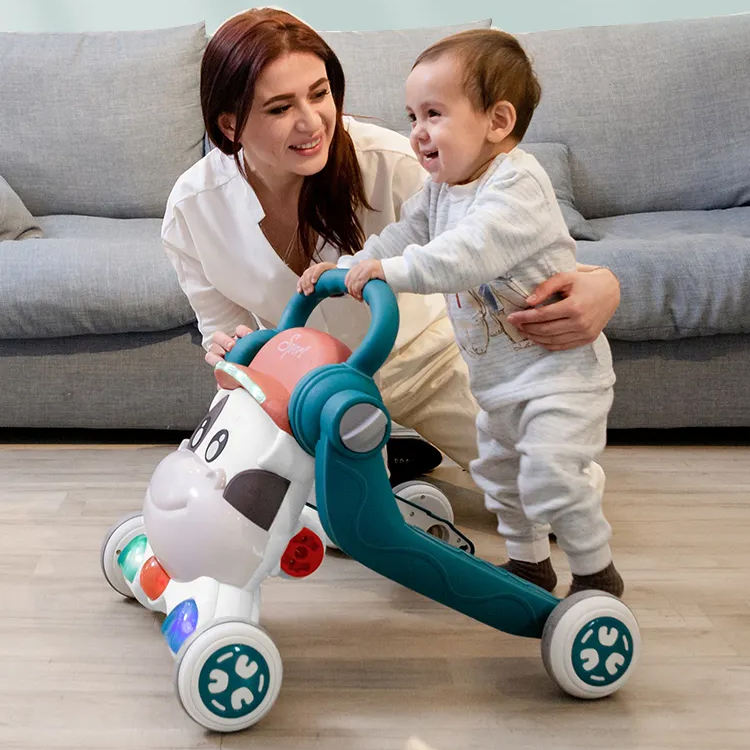
Amérique du Nord
L'Amérique du Nord comprend le Canada et les États-Unis. Comme nous l'avons souligné ci-dessus, seuls les déambulateurs à poussée sont viables sur le marché canadien. Cela vous limite donc à la fourniture de déambulateurs à poussée en gros uniquement sur ce marché. Marché des marchettes pour bébés aux États-Unis, en revanche, est plus dynamique. Ses trotteurs pour bébés les plus populaires incluent :
- Marchettes traditionnelles pour bébés
- Marchettes pour bébé assis-debout
- Déambulateurs
Les déambulateurs assis-debout et les déambulateurs à pousser devancent les déambulateurs traditionnels. Les parents aux États-Unis sont également particulièrement friands de déambulateurs dotés de fonctions intelligentes/technologiques pour l'apprentissage ou le divertissement des enfants.
Europe
Les consommateurs de l'Union européenne, et par extension du reste de l'Europe, sont très attentifs aux normes de sécurité des produits. Ces dernières années, les experts de la santé de la région ont souligné les risques liés aux trotteurs traditionnels, notamment les chutes. Par conséquent, la plupart des consommateurs européens préfèrent les trotteurs avec centres de jeux interactifs aux trotteurs traditionnels.
Asie-Pacifique
Le marché de l'Asie-Pacifique est sans doute le plus diversifié. Il comprend à la fois des pays développés et des pays en développement dont les citoyens sont confrontés à des situations socio-économiques différentes. Dans ce contexte, il serait préférable d'analyser les marchés nationaux spécifiques et d'identifier les trotteurs pour bébés qui pourraient leur convenir le mieux.
Il est néanmoins essentiel de mentionner que des pays comme Singapour, Nouvelle-Zélande, et Australie Les pays d'Asie-Pacifique ont été parmi les premiers à défendre la sécurité des trotteurs pour bébés. Leurs recommandations de sécurité recommandent les trotteurs à pousser plutôt que les trotteurs traditionnels. Compte tenu de l'importance de ces pays dans la région, la plupart des pays d'Asie-Pacifique sont susceptibles de se conformer à ces exigences de sécurité.
Par la suite, il est conseillé d’envisager de fournir des déambulateurs ou des déambulateurs assis-debout, car ils sont susceptibles d’être l’option la plus viable sur ce marché à l’avenir. Il peut être tout aussi rentable de proposer des modèles de trotteurs pour bébé à la fois élégants et luxueux, mais également abordables.
Le Moyen-Orient et l'Afrique
Les différentes études de recherche confirment toutes que le Moyen-Orient et l'Afrique sont des marchés en pleine croissance pour les trotteurs pour bébés. Les préférences des consommateurs sont encore largement fluctuantes et les exigences de sécurité ne sont pas encore aussi solides que celles des autres régions.
Néanmoins, certains études d'échantillons Les consommateurs sont de plus en plus préoccupés par la sécurité. L'accès à des modèles variés de marchettes pour bébés est également un défi majeur sur le marché. Il peut donc être idéal pour vous, en tant que distributeur en gros ou détaillant, de :
- Proposer des options de marchettes pour bébés traditionnelles et sûres tout en introduisant des marchettes pour bébés à pousser auprès des consommateurs de ces régions.
- Efforcez-vous de rendre les marchettes pour bébés facilement accessibles aux acheteurs de votre marché cible en explorant des options telles que les magasins en ligne avec un large réseau de livraison.
Comment choisir les fabricants de marcheurs pour bébé ?
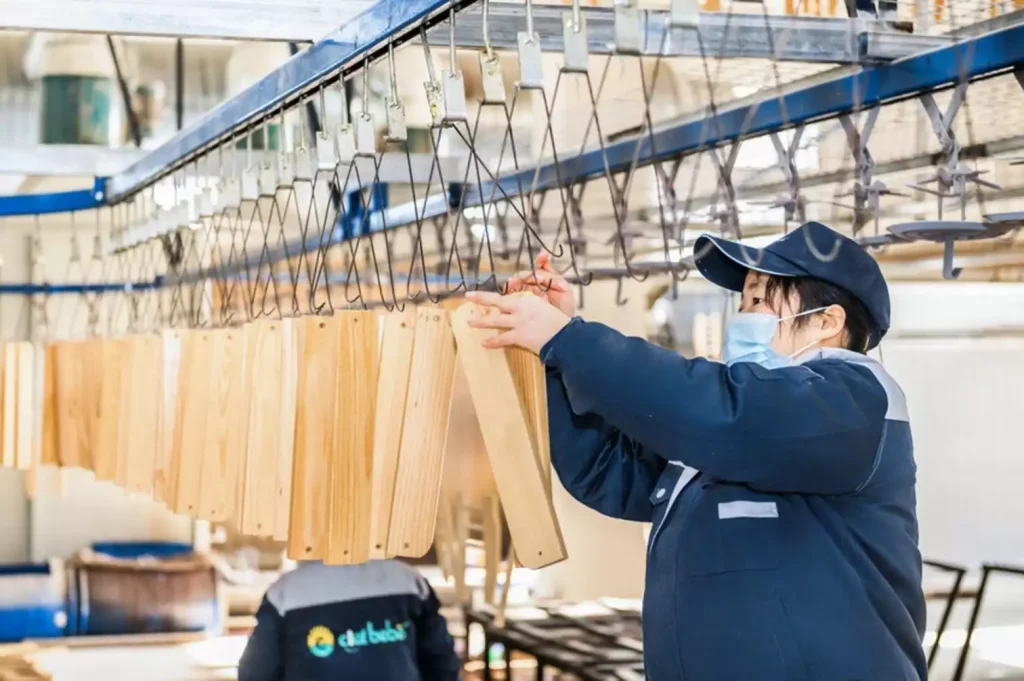
À la recherche de chaînes de fabricants
Voici quelques moyens pour vous aider à trouver un fabricant ayant une bonne réputation.
| Canal | Aperçu |
| Sites Web des fabricants | Une recherche en ligne des fabricants de marchettes pour bébé peut vous aider à découvrir les sites Web de chaque fabricant. Explorez leurs offres de produits et les détails de leur entreprise. N'hésitez pas à leur poser des questions. |
| Places de marché B2B | Les marchés B2B comme Alibaba ou Fabriqué en Chine répertoriez de nombreux fournisseurs de marchettes pour bébé. Vous pouvez sélectionner des fabricants potentiels en fonction de notes élevées et commander des échantillons pour évaluation. |
| Références | Les références des réseaux d'entreprises peuvent vous aider à trouver de bons fabricants de marchettes pour bébé. Cela peut être une méthode efficace si vous faites confiance à la référence ou si vous pouvez voir la preuve de la façon dont un fabricant spécifique les a servis. |
| Salons professionnels | Assister à des salons professionnels, comme la Foire de Canton, où les fabricants de marchettes pour bébés présentent leurs produits, vous permet d'évaluer leurs produits et de négocier les conditions en détail et en personne. |
Évaluation des atouts d'un fabricant sous différents aspects
1. Vérifiez les certifications et la conformité du fabricant
Un fabricant de marchettes pour bébé crédible doit disposer des licences et certifications commerciales requises dans son pays. Il est également idéal qu'il dispose des éléments suivants :
- Certifications de sécurité des produits émises par des autorités indépendantes de réglementation des produits de santé ou pour bébés.
- Certificats de conformité pour au moins une ou plusieurs régions.
Demandez ces documents et confirmez-les auprès des autorités compétentes dans le cadre de votre vérification préalable. Cela vous garantira que tous les trotteurs pour bébé que vous achetez auprès de ce fabricant répondent aux normes de qualité appropriées.
2. Renseignez-vous sur les usines et les capacités de production des fabricants
Un fabricant de marchettes pour bébé ne peut être qualifié de tel que s'il possède et gère une usine bien équipée. Il doit être disposé à divulguer l'emplacement de son usine et à vous permettre de la visiter si vous le souhaitez. Assurez-vous de vérifier ces détails en visitant ou en utilisant des vidéos, des demandes de renseignements locales ou des autorités commerciales. Visez des normes de fabrication élevées, des équipements de production de qualité, un personnel expert et des capacités de production élevées.
3. Interrogez leur expérience et leur expertise
Il peut être avantageux de travailler avec des fabricants de marchettes pour bébés plus expérimentés ; leurs compétences pointues et leur compréhension du produit et du marché vous garantissent un meilleur service. Une bonne façon d'explorer cela est de poser des questions sur le marché des marchettes pour bébés, les détails de conception, les normes de sécurité ou les options de personnalisation. Un fabricant expérimenté fournira des réponses détaillées et bien informées ou disposera de chefs de service que vous pourrez consulter.
4. Tenez compte de la gamme d’options de marchettes pour bébé
Une gamme plus large d'options de marchettes pour bébé vous offre davantage de choix à proposer à vos clients. Il est donc avantageux de choisir un fabricant de marchettes pour bébé qui propose un large choix de types et de modèles de marchettes pour bébé.
10 questions à poser au fabricant de votre trotteur
1. Quel type de marchettes pour bébé produisez-vous ?
2. À quelles normes de sécurité des trotteurs pour bébé adhérez-vous ?
3. Quelles certifications de sécurité avez-vous obtenues pour les marchettes pour bébés que vous fabriquez ?
4. Proposez-vous des services de personnalisation de marcheurs pour bébés ?
5. Quelle est la quantité minimum de commande (MOQ) ?
6. Quels sont les prix de gros des différents marcheurs pour bébés ?
7. Quel est le délai de traitement des commandes de trotteurs pour bébé ?
8. Effectuez-vous des contrôles de qualité ? Puis-je demander des contrôles de qualité par des tiers, par l'intermédiaire d'agents ou d'autres représentants ?
9. Quelles sont les conditions de paiement ?
10. Quelle est votre politique de retour sur les marchettes pour bébé ou les accessoires de marchettes pour bébé défectueux ?
Quels fabricants de marcheurs pour bébé sont fiables ?
L'industrie des marchettes pour bébés est vaste et remplie de centaines de fabricants de marchettes pour bébésLa tâche difficile consiste à trouver des fabricants de premier plan qui Vous pouvez compter sur nous pour vous fournir des marchettes de qualité. Voici un bref aperçu des meilleurs fabricants de marchettes pour bébé qui méritent d'être pris en considération.
| Fabricant | Emplacement | Produits offerts | Aperçu |
| Clafbébé | Anhui, Chine | Trotteurs pour bébés Lits superposés Chaises hautes pour bébé Berceaux | Clafbebe est une marque idéale si vous avez besoin d'un fabricant de qualité avec une expérience indéniable (20 ans). Ce fournisseur chinois de marchettes pour bébé est dirigé par un personnel expert garantissant des délais d'exécution rapides et une qualité de marchettes pour bébé irréprochable. |
| Joie | Dallas, États-Unis | Marchettes pour bébés Chaises hautes pour bébé Parcs Poussettes multifonctions | Joovy est une marque incontournable pour les parents à la recherche de trotteurs pour bébé alliant style et fonctionnalité. Elle offre une grande variété de modèles et utilise des matériaux de qualité. |
| Chicco | Lombardie, Italie | marchettes pour bébé Systèmes de voyage pour bébé Sièges auto Poussettes | Chicco s'adresse aussi bien aux consommateurs haut de gamme qu'aux petits budgets. Ses trotteurs pour bébé sont dotés de dispositifs de sécurité tels que des patins antidérapants et des dispositifs de freinage. |
| Tendance bébé | Californie, États-Unis | Trotteurs pour bébés Parcs Sièges auto Système de voyage pour bébé | Baby Trend allie qualité et prix abordable. Ses déambulateurs sont réputés pour leurs designs colorés et leurs roues de traction uniques qui peuvent rouler vers l'avant et vers l'arrière. |
| Vtech Enfants | Beaverton, Oregon | Trotteurs pour bébés Moniteurs pour bébé Sucettes pour bébé Bureaux d'activités pour enfants | Vtech Kids fabrique des trotteurs pour bébés avec des consoles de jeu interactives et intelligentes. La marque est soucieuse du développement des compétences des tout-petits. |
Comment importer des marchettes pour bébé d’autres pays ?
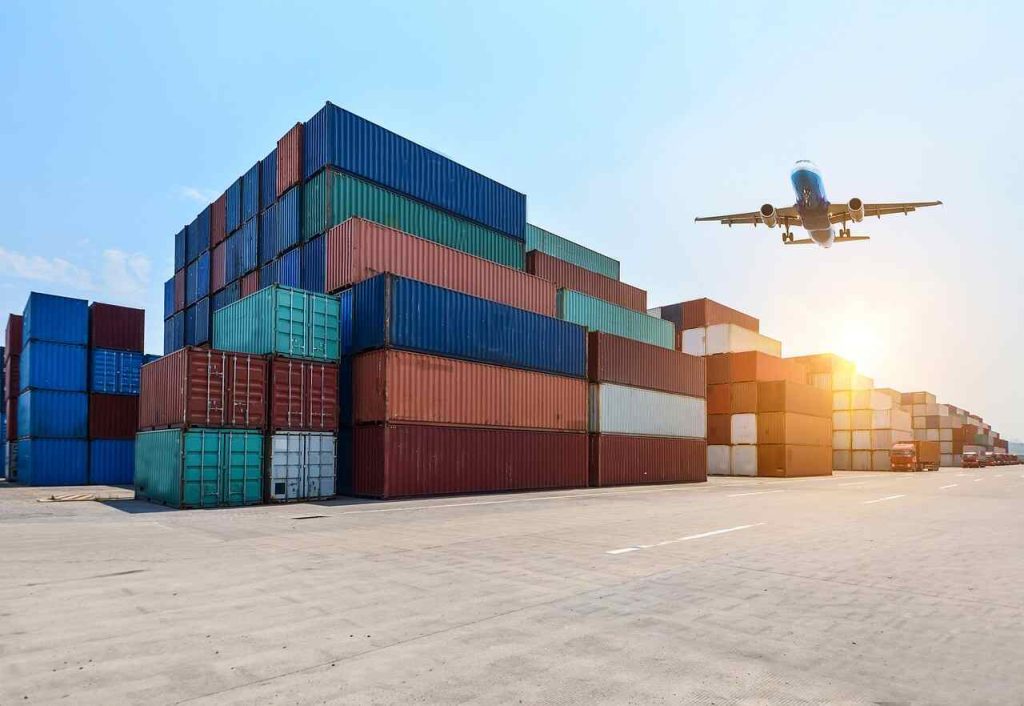
Étape 1 : Comprendre les réglementations en matière d’importation
Commencez par apprendre les réglementations d’importation de marchettes pour bébé dans votre pays afin de comprendre :
- Autorisations et limitations
- Politiques fiscales
- Documents requis, par exemple permis d'importation, documents d'inspection, etc.
Étape 2 : Obtenir les licences et permis nécessaires
Vérifiez si vous avez besoin de licences et de permis spéciaux pour importer des marchettes pour bébé. Obtenez-les si c'est le cas ou passez à l'étape suivante si vous n'en avez pas besoin.
Étape 3 : Organiser le paiement
Les fournisseurs livrent généralement les marchandises pour l'expédition une fois le paiement effectué. Cela peut se faire par virement bancaire, par un système de paiement par séquestre, par lettre de crédit ou par crédit commercial, entre autres options. Efforcez-vous d'organiser le paiement en temps voulu selon la méthode que vous avez convenue avec le fabricant.
Étape 4 : Organiser l'expédition et la logistique
1. Engagez un transitaire : choisissez et engagez un transitaire qui se chargera de l'expédition de vos marchandises une fois que le fabricant les aura autorisées à être livrées. Il devra vous trouver un transporteur approprié, réserver un espace, fournir la documentation nécessaire et superviser tous les détails du transport.
2. Conditions d'expédition : discutez et convenez des incoterms d'expédition. Ils décrivent vos responsabilités et obligations en matière d'expédition par rapport à celles du vendeur et du transitaire.
Étape 5 : Obtenir la documentation nécessaire
La plupart des documents d'importation proviennent de votre fabricant et de votre agent d'expédition si vous choisissez d'en utiliser un. Ils comprennent :
- Une facture commerciale:Il indique les marchandises, leur quantité, leur valeur, leur poids et les conditions de vente.
- Une liste de colisage:Une liste détaillée de tous les biens contenus dans le colis d’importation.
- Un connaissement:Un document d'expédition qui confirme la réception des marchandises par le transporteur et décrit les détails de l'expédition.
- Un certificat d'origine : Ce formulaire déclare formellement la provenance des produits que vous importez. Il est fourni par le fabricant et doit être validé par les autorités commerciales ou d'exportation de ce pays.
- Une déclaration d'importation:Il s'agit d'un formulaire que vous remplissez en indiquant le type et la nature des marchandises que vous importez ainsi que leur valeur.
Étape 6 : Dédouanement
Présentez les documents nécessaires à votre bureau de douane local à l'arrivée de vos trotteurs pour bébé importés. Les agents des douanes inspecteront les marchandises, vous indiqueront les paiements à effectuer et dédouaneront vos marchandises comme le stipule la loi.
Étape 7 : Réception et distribution des marchandises
Organisez la livraison du dernier kilomètre de vos marchandises du port à votre entrepôt. Déballez-les et triez-les en conséquence. Vérifiez qu'elles ne présentent aucun défaut avant de les distribuer à vos clients détaillants ou aux grossistes en marchettes pour bébés.
Étape 8 : Tenue de registres et rapports
Conservez des enregistrements détaillés en ligne et sur papier de vos transactions d'importation et de vos dédouanements. Ils sont essentiels pour les audits, la comptabilité et les autres processus de responsabilisation.
Conclusion
Le marché des trotteurs pour bébés est en pleine mutation, mais son potentiel de rentabilité est désormais encore plus important. D'autant plus grâce à des innovations telles que les trotteurs multifonctions que de plus en plus de parents adoptent comme des options plus sûres pour favoriser le développement sain de l'enfant.
Alors, quelle est la stratégie gagnante pour vous en tant que fournisseur ? Tout d'abord, identifiez les besoins spécifiques en matière de trotteurs pour bébé de votre marché cible, comme nous l'avons exploré dans ce blog. Ensuite, trouvez un fabricant fiable qui peut vous fournir en toute transparence des trotteurs pour bébé de qualité pour répondre à ces besoins.
Laissez Clafbebe vous aider à consolider le marché des marchettes pour bébés !
Clafbébé est un fabricant chinois de marchettes pour bébé expérimenté et digne de confiance ! Nous sommes également excellents dans la conception de produits et pouvons produire des marchettes pour bébé qui sont les plus attrayantes pour les parents contemporains.
Clafbebe entretient des relations de coopération étroites avec des grossistes et des détaillants étrangers, Exportation de marchettes pour bébés fabriqué en stricte conformité avec les normes internationales dans de nombreux pays et régions, et le volume des exportations augmente d'année en année.
Nous souhaitons utiliser notre force usines, équipement, et expert une équipe pour vous aider à construire votre marque personnelle. Contact Clafbebe maintenant pour obtenir des solutions !


